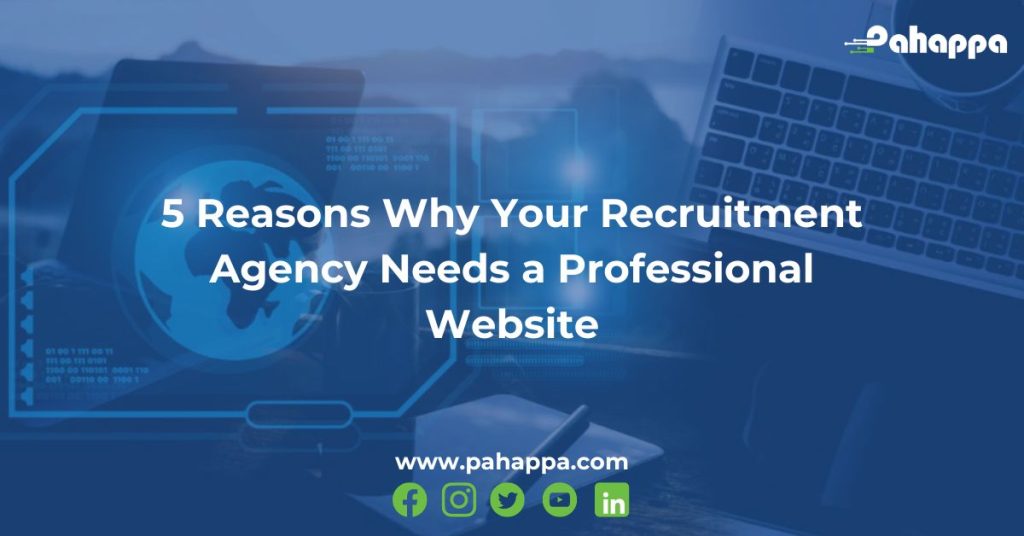If you’re an established business owner, you know that the digital world is changing rapidly. To stay ahead of the curve, you need to embrace digital transformation. And one of the best ways to do that is to invest in digital transformation software. Digital transformation software can help you improve your efficiency and productivity, gain better insights into your customers and operations, create new products and services, and stay ahead of the competition. In this article, we discuss why your established business needs digital transformation software now and how to choose the right software for your needs.
What is Digital transformation software?
Digital transformation software is a broad term that refers to any software solution that helps businesses improve their operations and customer experience through the use of digital technologies.
Digital transformation software can be used to automate tasks, streamline workflows, improve communication and collaboration, and gain insights into customer behavior and business performance. It can also help businesses to develop new products and services, and to reach new markets.
This can include a wide range of software, such as:
- Inventory management system: This type of software is used to track and manage inventory levels. It can help organizations to ensure that they have enough inventory to meet demand, while also avoiding overstocking.
- HRMIS: This type of software is used to manage human resources activities, such as employee records, payroll, and benefits. It can help organizations to improve the efficiency of their HR processes and to make better decisions about their workforce.
- M&E: This type of software is used to monitor and evaluate programs and projects. It can help organizations track their progress toward their goals and identify areas where they need to improve.
- Finance management system: This type of software is used to track and manage financial data, such as accounts payable, accounts receivable, and budgeting. It can help organizations to improve their financial reporting and to make better financial decisions.
- CRM: This type of software is used to manage customer relationships. It can help organizations track customer interactions, identify potential leads, and close deals.
Why Your Established Business Needs Software
- Improve efficiency and productivity
Software can automate many of the manual tasks that employees currently perform, freeing them up to focus on more strategic and value-added activities. This can lead to significant improvements in efficiency and productivity.
- Gain better insights into customers and operations
Software can collect and analyze data from a variety of sources to give businesses deeper insights into their customers and operations. This information can be used to improve decision-making and make better business decisions.
- Create new products and services
Software can help businesses develop new products and services that meet the needs of their changing customer base. For example, businesses could use software to create a mobile app for their customers or to develop a new online sales channel.
- Stay ahead of the competition
Established businesses’ competitors are likely already using software to improve their operations and customer experience. If established businesses don’t do the same, they’ll quickly fall behind.
- Improve customer service
By automating tasks and streamlining workflows, software can free up employees to focus on providing better customer service.
For example, a customer relationship management (CRM) system can help businesses track customer interactions, manage customer data, and provide personalized support.
How to choose the right software for your needs?
- Identify your needs
The first step in choosing the right software for your needs is to identify your specific challenges and opportunities. What are you trying to achieve with the software? What are your pain points? Once you have a good understanding of your needs, you can start to look for software solutions that can help you address them.
Some questions you can ask yourself to identify your needs are:
- What are my biggest business challenges?
- What are my biggest business opportunities?
- What are my long-term business goals?
- What are my pain points?
- What tasks can be automated?
- What processes can be streamlined?
- What data do I need to collect and analyze?
- What compliance requirements do I have to meet?
- Do your research
Once you have identified your needs, you can start to research different software solutions. There are a wide variety of software solutions available, so it’s important to compare different options before you make a decision.
Here are some things to consider when doing your research:
- Read reviews from other businesses that are using the software.
- Talk to other businesses in your industry to see what software they are using and what they like and dislike about it.
- Schedule demos with the software vendors. This will give you a chance to see the software in action and ask questions.
- Get a free trial of the software, if possible. This will give you a chance to test the software and make sure that it is a good fit for your business.
- Choose a scalable solution
As your business grows, your software needs will change. That’s why it’s important to choose a scalable solution. A scalable solution is one that can grow with your business without having to switch to new software.
Here are some things to consider when choosing a scalable solution:
- Make sure that the software can handle the volume of data and transactions that your business needs.
- Make sure that the software can be integrated with other software solutions that you are using or may use in the future.
- Make sure that the software vendor offers a variety of pricing plans so that you can choose the plan that best fits your needs.
- Consider your budget
Software can be expensive, so it’s important to consider your budget when choosing a solution. There are a variety of pricing models available, including subscription-based models and perpetual licenses.
Here are some tips for choosing a software solution that fits your budget:
- Compare pricing plans from different software vendors.
- Look for software solutions that offer discounts for non-profit organizations or small businesses.
- Consider negotiating with the software vendor to get a better price.
- Get buy-in from your team
It’s important to get buy-in from your team before you implement any new software. Make sure that everyone understands the benefits of the software and how it will be used.
Here are some tips for getting buy-in from your team:
- Explain the benefits of the software to your team and how it will help them to do their jobs better.
- Involve your team in the software selection process.
- Get feedback from your team on the software once it is implemented.
Digital transformation software is essential for established businesses that want to stay ahead of the competition and achieve their business goals. If you’re ready to take your business to the next level, contact us today for a free consultation on our software development services. We can help you choose the right software solution for your needs and implement it successfully.











